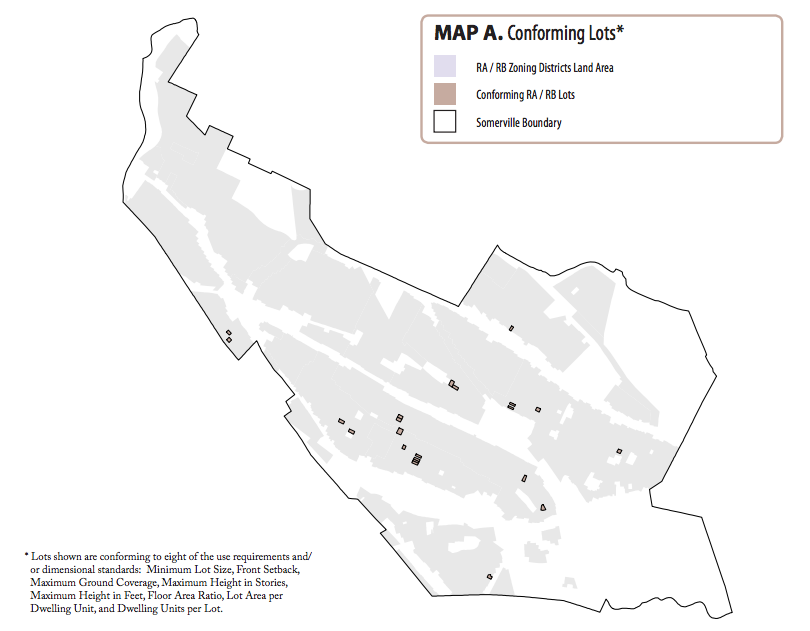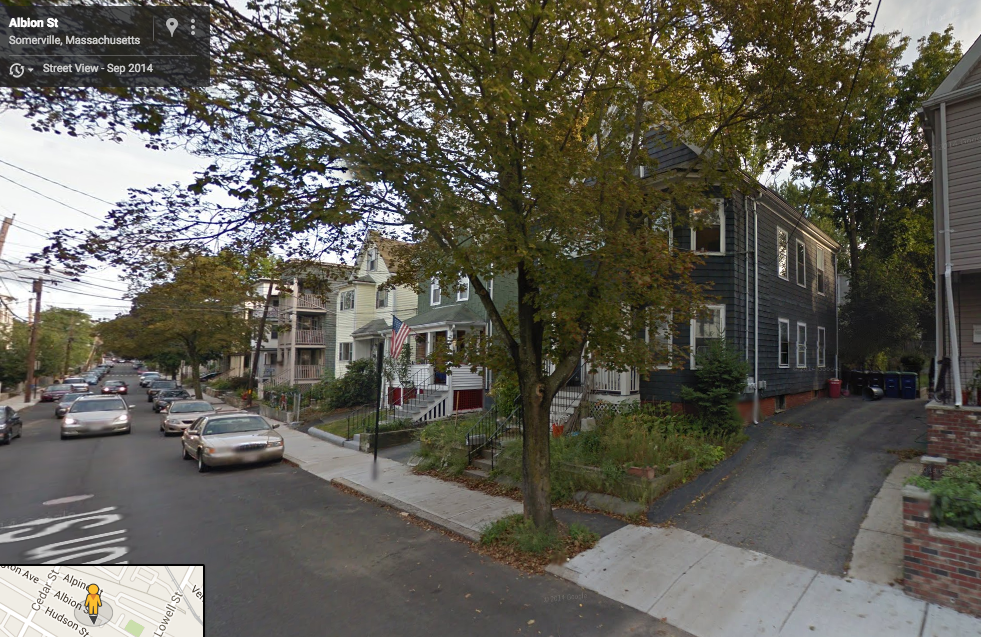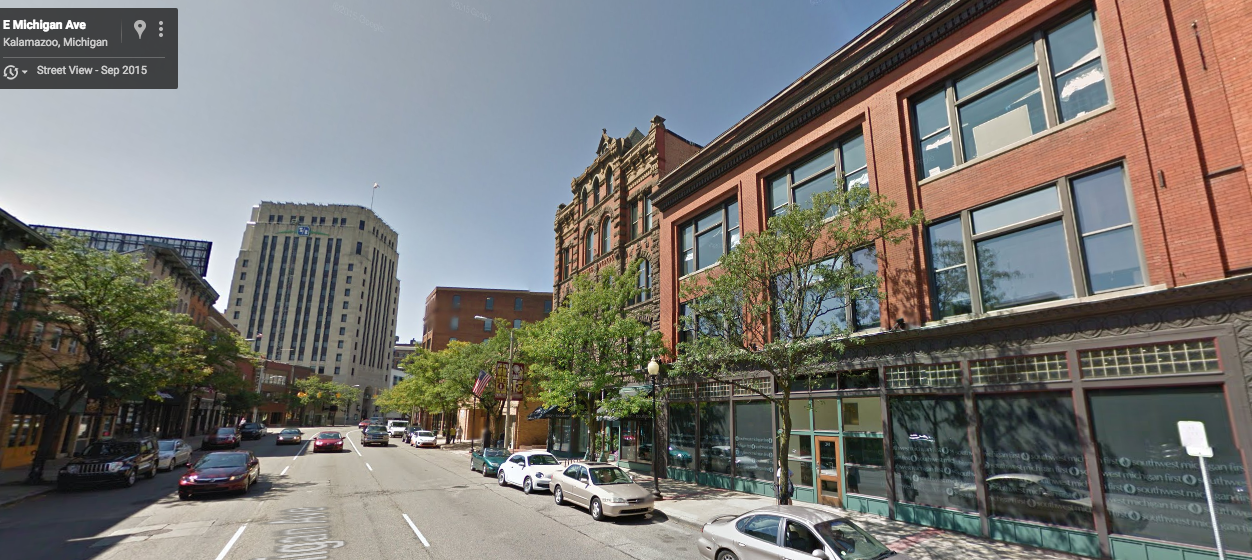We got quite a bit of interest on our post last week about how the Boston suburb of Somerville, Massachusetts had written itself a zoning code that would have prevented the construction of virtually the entire city of 80,000 people if it had been adopted at its founding. According to Somerville’s own planning department, just 22 residential buildings in the entire municipality met its zoned density standards—and if you added parking restrictions, it’s likely those last 22 would be illegal, too.
The post purposely steered clear of any sort of real economic or political analysis, focusing on the sort of gut-check question about whether building standards that declare entire neighborhoods illegal—neighborhoods that, by all appearances, are attractive and appreciated by their residents—make any sense.


But it’s worth underscoring that this is more than just a funny legal “whoops,” the land use equivalent of those old laws about not whistling on Sundays. These sorts of nonsensical land use rules both have serious consequences and are the results of predictable political dynamics—which have, predictably, led to them being adopted in various forms throughout the country. In other words, though we’re using Somerville as our example here, it’s far from an outlier among American cities.
Even semi-regular readers of City Observatory will know that, particularly in a high-demand region like Boston, overwhelming evidence suggests that regulations that restrict new housing (as Somerville’s do, since required density is set below what already exists) tend to increase prices. To be fair, today the city’s planners recognize this, and are planning large amounts of new housing around an extension of Boston’s Green Line. But according to the Census, before the last year or two, there was an extraordinary drought of new construction in Somerville, with barely 100 new homes built since the turn of the century, contributing to a regionwide shortage. Meanwhile, Zillow puts the median price of a home there at well north of half a million dollars.
And the problem isn’t just housing, per se. It’s a shortage of exactly the kinds of communities that Somerville represents, and that its zoning code outlaws: relatively dense, walkable, transit-accessible neighborhoods. Research by Jonathan Levine and many others have both established that demand for these sorts of neighborhoods outstrips their supply, and that the result, too often, is higher prices, more economic segregation, and less opportunity for lower-income people. And this process, writ large, manifests itself as what we’ve called the “shortage of cities”: the growing demand for living in great urban spaces is far outstripping the limited supply, with the result that nationwide, city center home values are rising much faster than in suburbs.
So how do we end up with these sorts of rules? Well, in an earlier post we’ve covered one version of zoning history. But there also seem to be two dynamics here worth highlighting. The first is adopting rules that sound good in the abstract, but that don’t take into account various real-world tradeoffs. An excellent example of that is actually this story about developing a building in downtown Kalamazoo, Michigan’s, where the required amount of parking would take up more room than actually exists on a downtown parcel—even before you’ve built a building. You can easily imagine the thought process here: People are worried about parking, so who could object to requiring that every new building have its own parking spaces? Until you see that, in practice, that means replacing a continuous, attractive streetwall with parking lots that take up as much, or more, space than the actual building. Or, returning to Somerville, who would object to open space? Until you realize that the setbacks and open space requirements you’ve written don’t reflect the community that already exists—and, in fact, would require smaller, more widely-spaced buildings, probably reducing the number of people who live in your neighborhood, and therefore the number of local stores that could be supported, and how often the local bus could come, and raising the price of housing, and so on.

The other big issue is that these rules are generally written at a very local level, and so don’t reflect the interests of people who are affected by these decisions, but live elsewhere. It’s completely understandable that a resident of a moderately dense street would be somewhat concerned that more housing might cause some additional traffic, or make parking a bit harder, or make the neighborhood just a bit louder, and so on. Those concerns ought to get a hearing. But they also ought to be weighed against the desires of other people to be able to live in the area—especially when the area is a community that offers good access to jobs, public education, and other amenities that allow people to build comfortable lives. When housing decisions are only made locally, the former set of voices get input, but the latter don’t. No wonder, then, that places where state governments exert more influence on development policy tend to be less segregated.
The key point is there’s a systematic bias here: those concerned with the negative effects of new development are well-represented in the planning and development approval processes. Those who might benefit from the positive effects aren’t. Over time this tilt results in the steady accretion of zoning and parking requirements, setbacks and height limits that while individually plausible are cumulatively stifling.
That means we end up with a profound disconnect between the kinds of neighborhoods we legislate for and the kinds of neighborhoods we actually want. Planning that actually takes into account the full picture of what these sorts of requirements mean for new development—and the full range of people who are affected by these decisions—could lead to more high-quality, diverse, and opportunity-rich communities.
